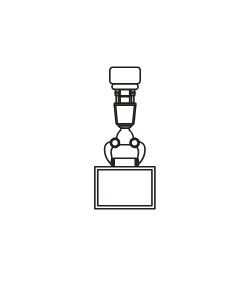How To Approach Product Engineering And Design As A Client
Before you engage a company that provides product manufacturing services, it's a good idea to give some thought to how the engineering and design process is going to unfold. If you're getting ready to move ahead with a project, here are four product engineering and design issues to think about.
Working with a Team
If you end up narrowly focused on designing and engineering a product, there is a risk that you'll undermine other phases of the process of getting to market. Contact the folks who'll be handling manufacturing, for example, and keep them in the loop. When you arrive at a new prototype, talk with them about what the pros and cons of the design are.
Make a similar effort to loop in team members who handle marketing, customer service, repairs, recalls, testing, and legal issues. This will limit the number of problems down the line that might cost your company money. If someone is convinced that the design is going to bring them pain when the product is released, try to address their concerns as early as possible.
Examine What's Already on the Market
Successful and even unsuccessful competitors have done you a great service by field testing what does and doesn't work. Take a long look at what they're getting right and wrong.
Now, it's important to make sure the legal side of your team has a good look at anything you design. You don't want to be stuck with litigation because something that inspired you is patented. If an element of a competitor's product does appear to be essential and requires a license, look into how they've acquired the license or how they offer licenses. You'd be surprised how many companies are happy to take royalties from their competition.
Make Use of Simulations
Much of modern product engineering and design involves drafting and testing ideas on computers. Take advantage of this to save money that might be lost by breaking real prototypes or products.
Likewise, maintain copies of the simulations for later use. Long after a product has gone to market, the simulations can help you understand data that comes in as your product tries to survive its first contact with reality in the consumer world.
Test, Test, and Test Some More
There's no substitute for making a product and seeing what happens. Develop a process that allows you to deal with product manufacturing services, engineering and design issues, and testing in a feedback loop. Extend this process into the release phase and continue to make revisions to drive quality.
To learn more, contact a product engineering and design company.
 If you contribute to the industrial and manufacturing industry you may have considered implementing digital technology into your business. There's always a fear of the unknown and it's quite common to feel hesitant about trying something new. We created this site to help you decide if a changeover to digital technology is right for your business model.
We've researched the advantages and disadvantages of digital transformation by examining data, case studies, and speaking with manufacturing heads who have already embraced the transition. As you read the articles in this blog, you'll gain valuable insight into cost performance, productivity rates and quality enhancements of digital technology. We hope that by providing this information it will help you decide if a digital transformation is in your near future.
If you contribute to the industrial and manufacturing industry you may have considered implementing digital technology into your business. There's always a fear of the unknown and it's quite common to feel hesitant about trying something new. We created this site to help you decide if a changeover to digital technology is right for your business model.
We've researched the advantages and disadvantages of digital transformation by examining data, case studies, and speaking with manufacturing heads who have already embraced the transition. As you read the articles in this blog, you'll gain valuable insight into cost performance, productivity rates and quality enhancements of digital technology. We hope that by providing this information it will help you decide if a digital transformation is in your near future.